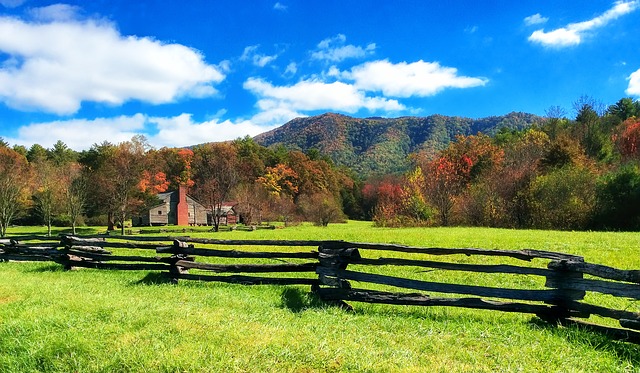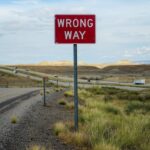Imagine for a second that you found yourself lost in the middle of a vast mountainous forest. Doesn’t matter how you got here, just know that you’re lost and you have nothing but the clothes on your back and your sharpened mind thrown into survival mode.
What do you do? How do you get un-lost?
Before you start freaking out and curling up in the fetal position because you can’t just plug your address into Google maps, take a second to think about what’s going on, observe your surroundings, and come up with a survival strategy.
Now, what might be a good place to start. How could you get a better sense of where you are?
Jump really high? No.
Climb a tree? Risky but could work.
Seek higher ground? Bingo!

One of the most crucial first steps, when lost, is to pinpoint your current location. Where am I relative to other things, landmarks, and possible civilization? If you can get to a high elevation you will most likely be able to see the lay of the land and have a general idea of where you’d like to go.
OK perfect, you see a small town way off in the distance down the hill. Let’s go!
You start making your way towards where you think the town should be, but as the forest gets thicker and the land less sloped a creeping feeling pops up that you might be getting lost again. Now, what?
What is something that might tell you you’re heading in the right direction?
Birds!? What would that tell you?
Moss on the trees? Helpful, but we’re heading downhill.
Water? Yup!

One the easiest ways to find civilization and move downhill at the same time is to look for sources of water. If you find yourself stumbling up a small creek or a big river, follow it. Chances are high that it will point you to where you need to go. Plus it’ll give you some fresh drinking water.
Alright you’ve made it a little further along the river but you’re unsure if you are actually getting any closer to the destination. What is something else you can spot to make sure you’re getting warmer?
Where is the sun? I meant warmer to your destination.
Take a nap? Not the worst idea.
Look for signs of people? You got it!

While travelling through the wilderness, be observant. As you’re traversing scan the area for any signs of others passing through – look for old campfires, cut tree stumps, fishing line, food wrappers, cigarette butts, plastic water bottles, or any other kind of litter. If you find any such evidence, examine your surroundings to determine which way they went – you may be near a trail or road that can lead you out.
Alright with that information in mind you happen to find a spot where some people were camping. You’re not sure but you think they continued on southward (or at least that’s what you’re inner Bear Grylls is telling you is south).
And finally, after a long day of worrisome hiking, you make it to a clearing in the trees and find yourself face to face with a large ranch. You hop a couple of fences, dodge a couple of aggressive cows and knock on the front door. You’re greeted by the sweetest old lady who is both excited and surprised to have a visitor. You explain the situation and she tells you there is nothing to worry about now. You’re safe. You’ve arrived.
After you’ve settled down and enjoyed some freshly baked cookies with hot chocolate, she sits down with you and asks, “So, did you enjoy this fun little adventure?”
You answer with a far off look on your face, “I don’t know, I was so worried about surviving I never had a chance.”
THE MORAL OF THE STORY
Okay, okay. Now, what was the point of that whole story? I’m well aware this isn’t a wilderness survival website and this is kind of out the range of my typical article (but not too far off).
Well, (as you may have guessed) like many good hypothetical’s, this one serves to demonstrate some important lessons for anyone who is lost amidst “The Journey”.
Let me explain…
LOST IN FOREST = LOST IN LIFE
In the journey of life, it can be so easy to get lost. We can take a wrong turn, follow some poor directions, or just wake up one day and realized we’ve gone so far off track we don’t know where we are.
When you find yourself suddenly lost the important thing to remember is that getting lost is a natural part of the journey. And if you want to improve your chances of reaching the destination the first thing to do is calm down. You’re not the first person to have a crisis of purpose and you won’t be the last. Welcome to the human experience.
Are you calm? Alright, what’s the first step? Can you remember?
SEEK HIGH GROUND = SELF-AWARENESS
Just like you would if you were lost in the wilderness, the first step in life is to always get a good sense of where you are now.
Where are you on the timeline of life?

- Are you just getting started?
- Are you at the end of a chapter?
- Or are you somewhere right in the middle unsure of what’s next?
No matter which one it is, the next step is simple. Now that you know whereabouts you’re situated, where are you going? Where is the small town, the smoke, or the noise you hear off in the distance?
You don’t have to have an exact idea of what the destination will look like, but you gotta at least know where you’re going to end up.
Okay, you know where you’re going but how do you get there?
WATER = VALUES
Alright, now this one is a little abstract but just go with it. In the same way, you’d use signs of water (i.e. Rivers, creeks, and streams) to let you know if you are going downhill, your values can serve as a similar guiding light to let you know you are moving in a purposeful direction.
The struggle for many people is that they end up going down paths or pursuing things that other people value. They seek what their peers are doing, what the media tells them matters, or whatever path society says in safest. And evidently what happens to those who follow such a path is that they eventually come to the realization they were never in control. And it’s this epiphany that can often lead to the classic “mid-life crisis”.

So, the lesson here is simple. Know what you value. Whether it’s character traits (discipline, honesty, learning), certain personal experiences (connecting with nature, getting physically stronger, teaching others), or very specific things (golf, volleyball, basketball, reading, horses, Chia pets), it’s so important that you know what is important and essential to you so that even when you do get unsure about your path, you can still keep an eye out for the important stuff.
Make sense? Alright let’s move on. This next one is simple but important to briefly consider.
SIGNS OF PEOPLE = SIGNS OF PEOPLE
Now, I think it’s safe to say that comparing ourselves to others is the quickest way to distort our personal experience. Theodore Roosevelt once said, “Comparison Is the Thief of Joy”. And I think that is some damn good advice.

However, there are times and moments in life when a little comparing can be helpful. There is no point in going down the road less travelled if it’s just going to lead you off a cliff.
As I said, this a simple lesson so don’t spend too much time dwelling on it or you’ll get stuck in a never-ending cycle of comparison. Rather, consider two questions and move on:
- Where did those who came before you go next?
- What mistakes did they make that you can avoid?
This is enough to let you know where to go next if you’re unsure and it’s a helpful means of knowing what traps to avoid. But if you find yourself setting up camp and getting comfy, it’s time to keep moving.
THE END OF THE JOURNEY
Finally, you’ve made it. The journey has come to a close. All that stress, focus, discipline, and hard work has finally paid off.
Perhaps this is your graduation, the end of a season, or retirement. Maybe it’s even your deathbed.

All you know is that “lost” feeling is gone because you’ve arrived. You’ve got your fresh baked cookies and a cup of hot chocolate and you’re ready to relax now.
But something doesn’t quite feel right…
A curious but ominous thought starts to creep into your head and the far off look comes rushing back. It forms itself into a question:
“So, did you enjoy this fun little adventure?
I don’t know…






